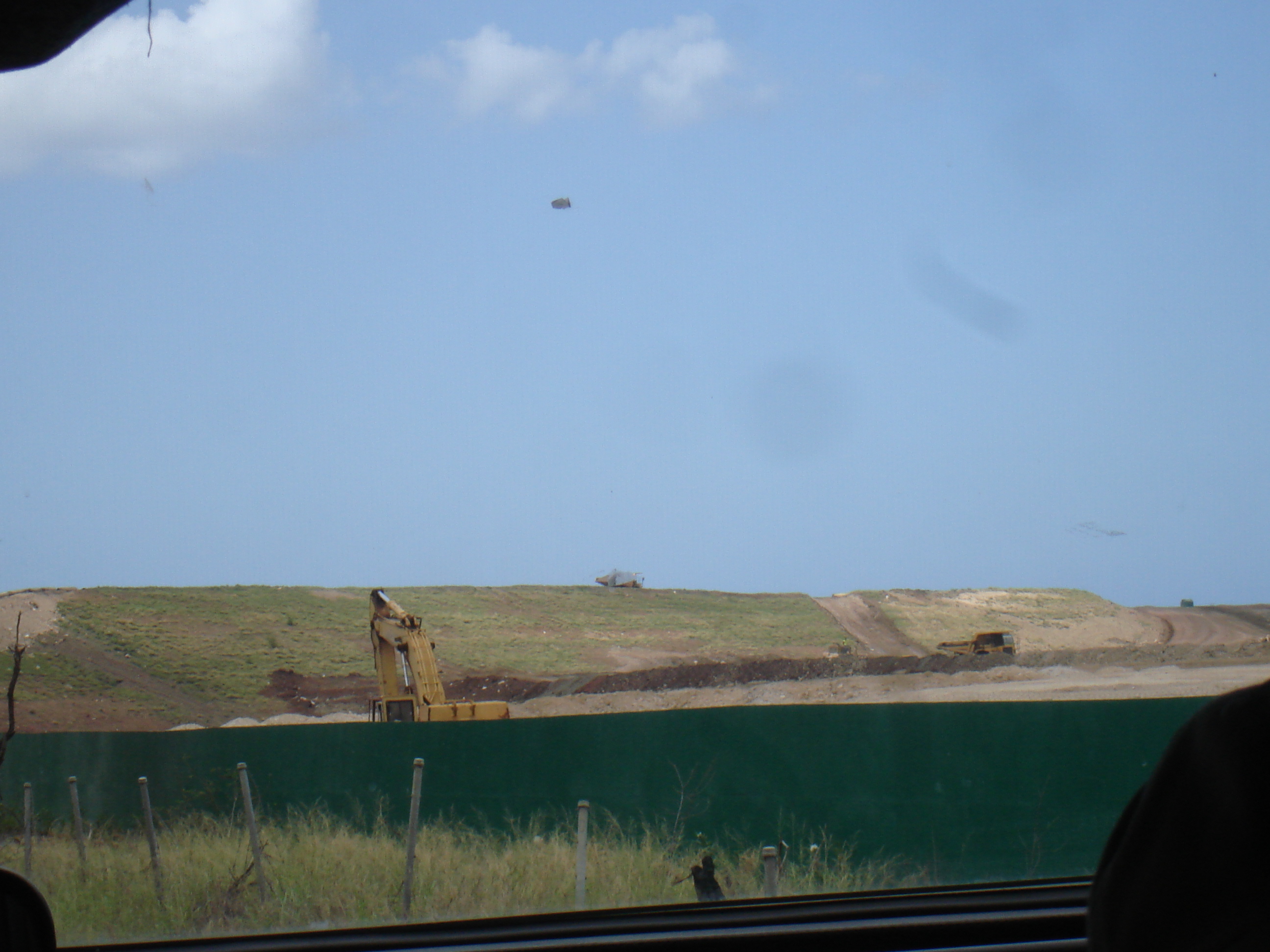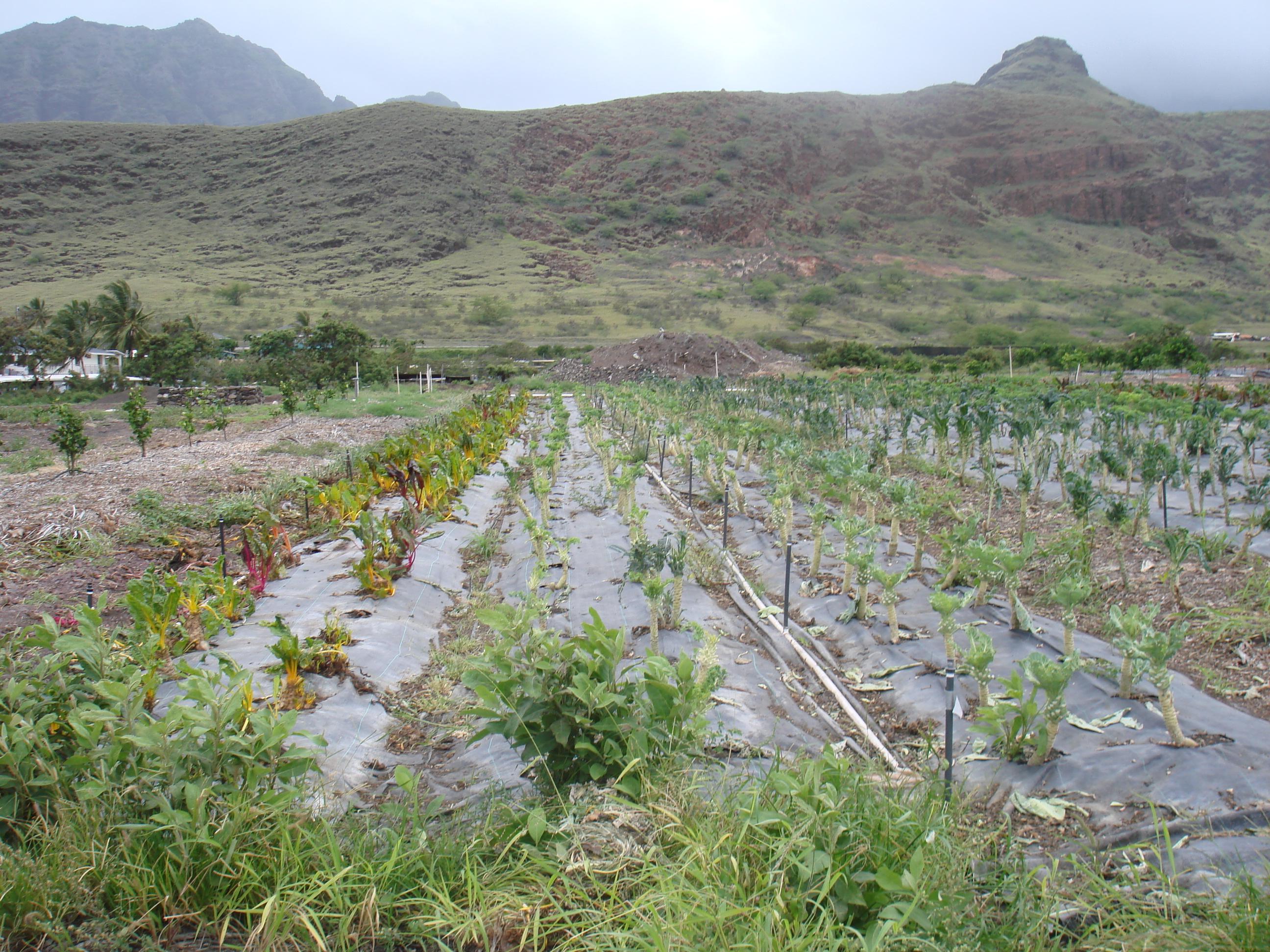Blog
News, updates, finds, stories, and tidbits from staff and community members at KAHEA. Got something to share? Email us at: kahea-alliance@hawaii.rr.com.
Riding the Justice Bus
From Shelley:
Last weekend we hosted the third Environmental Justice tour of Wai’anae. We had a nice mix of people hailing from different parts of the island and from many different backgrounds–professors, students, locals, newcomers, young, and not so young–it was great. ![]() Before I begin the breakdown of what we saw, I just have to say mahalo to the Wai’anae aunties who always inspire me–if every community had a cadre of aunties like them, surely the world would be a better place. They know and love their aina and will protect her with the same zeal that anyone would fight for their grandma or grandpa.
Before I begin the breakdown of what we saw, I just have to say mahalo to the Wai’anae aunties who always inspire me–if every community had a cadre of aunties like them, surely the world would be a better place. They know and love their aina and will protect her with the same zeal that anyone would fight for their grandma or grandpa.
On our tour we heard many stories about the landscape of the area. I’ve always loved the mountains in Wai’anae, but now I really see them differently! We watched the demi-god Maui being born, two lovers greeting each other in the mist, and even mano (sharks) in the mountains! We saw Hina’s cave and beautiful Makua Valley (although currently occupied by the US Military). Along the way we also saw some not so beautiful things. We drove by PVT, a construction landfill which houses especially hazardous materials oftentimes from construction demolitions. There is a giant mountain of asbestos that is literally stories high, right next to a neighborhood. We were all shocked to see that there was nothing but a thin black piece of material between someone’s backyard and the asbestos mountain, jokingly named Pu’u ‘Opala–Rubbish Mountain.
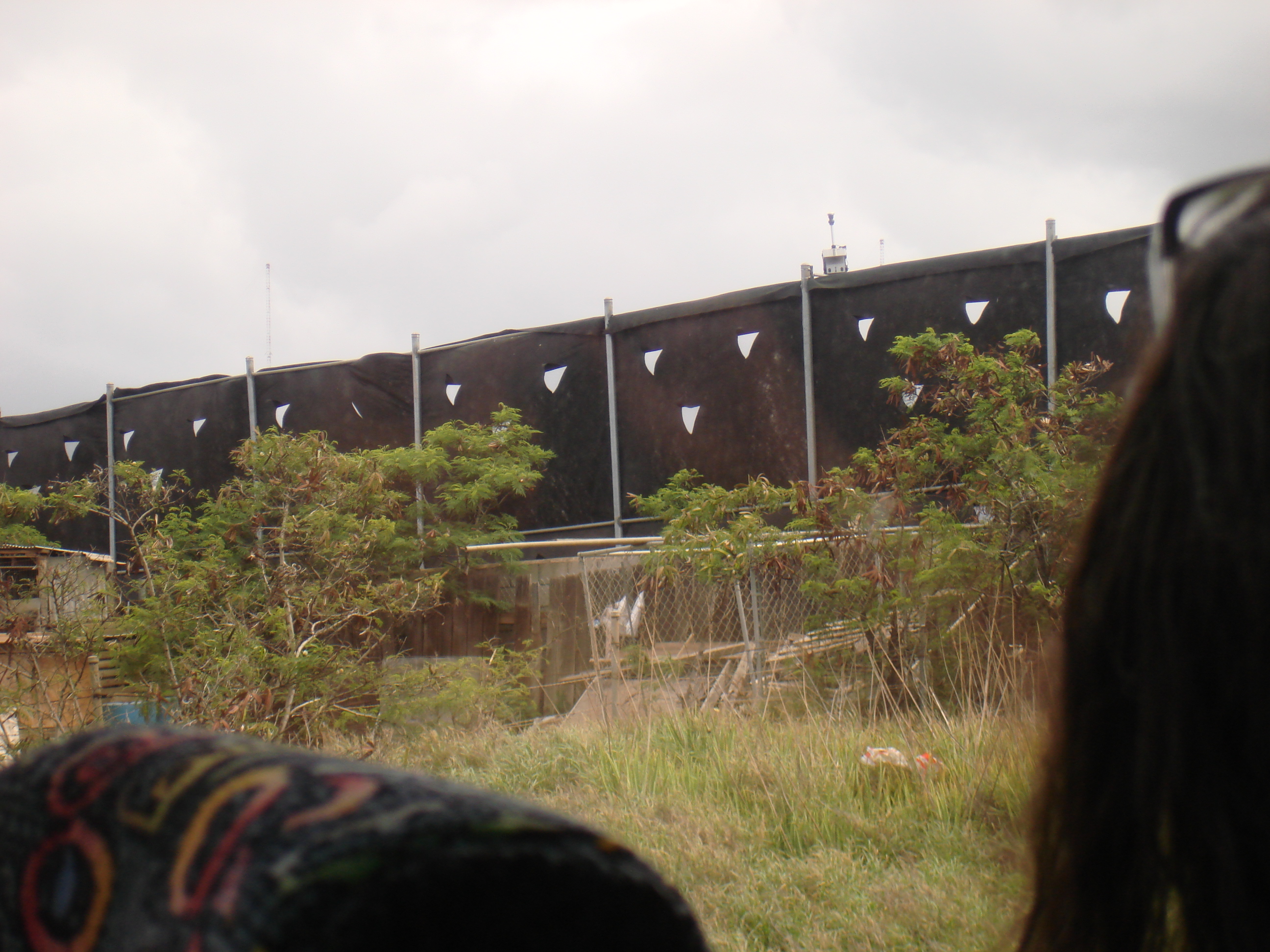
This is the flimsy cloth barrier that supposedly protects the people who live in the neighboring community.
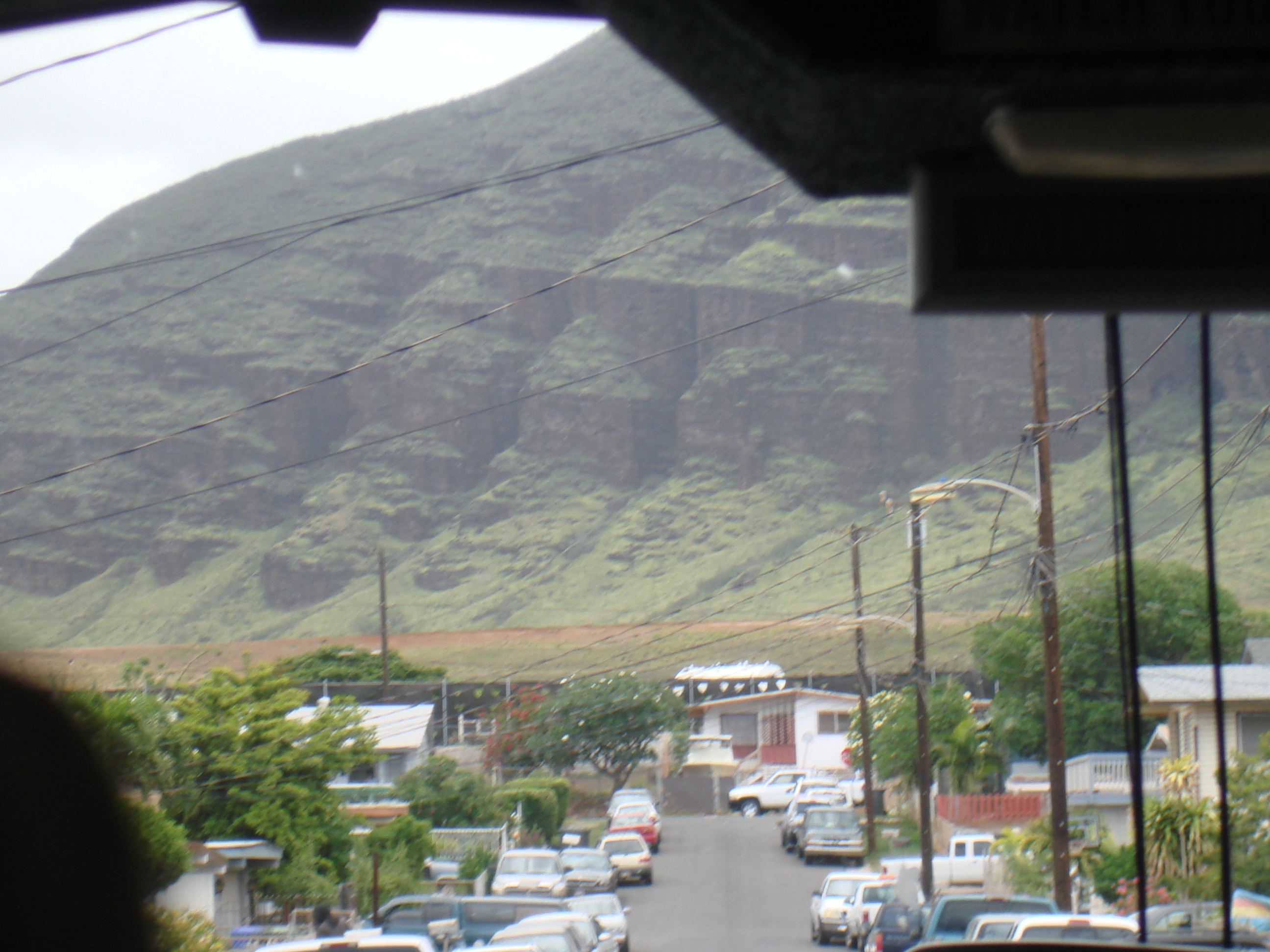
Look closely, that light brown line cutting the picture horizontally is the top of the asbestos hill. Much higher than the flimsy cloth barrier "protecting" the residents.
The place where the beautiful and pollutant met was at the base of the mountains, near PVT. We got off the bus and were greeted by 2 horses. This is the site that they are trying to get changed from agriculture to industrial land. I cannot imagine a landfill in such a pristine place. We held this bus tour to ask the participants to stand in solidarity with this community to fight off the “purple spot”–which is what this proposed industrial zone would look like on a map. You can go here to learn more and sign a petition!
We ended the tour up at MA’O Farms to show us a system that is working in Wai’anae, in stark contrast to the dumps and proposed dumps that are not a good fit. Mahalo to Kamu Enos for showing us around! We even got to learn about sustainable building practices using materials that were all locally sourced. MA’O answers back to all the people who think that Wai’anae is too dry to grow food!
Mahalo to all the aunties for showing us what aloha aina feels like. I loved hearing them gush about the legends of Wai’anae! I truly will never see Wai’anae the same again. Our next bus tour is July 24, leave a comment if you want to reserve your spot! ![]()
Mahalo to Candace Fujikane for the pictures! ![]()
A tale of two cities?
A tale of two cities? One protected, one destroyed. Comments were due today on a proposal to protect 1,500 arces of a rare leeward koa forest on Maui. The Nakula NAR is a small, but important subset of the huge Kahikinui Forest Reserve. It is home to rare native plants and trees… what is more important is — if protected — this area will become home to many, many more species unique to Hawaii. A restored, thriving community. See our comments on the Nakula NAR.
At the same time on the same island in the ahupua’a right next door, developers propose to build 1,400 homes, a golf course, and a shopping mall over a rare dryland forest. The Wailea 670 project would threaten 20 native species and desecrate multiple inter-connected sites of cultural signficance. Public comments are now being taken on the Environmental Impact Statement for the Wailea 670 project in South Maui. To learn more and submit comments, visit www.savemakena.org/wailea.
Hawaiʻi Undersea Military Munitions Assessment
Video and article on the Hawai’i Undersea Military Munitions Assessment–the search to find legacy dumped munitions around Hawai’i, in the UH Malamalama: “…the first study of possible chemical weapons sites in Hawaiʻi and the most comprehensive study ever taken in U.S. waters…”
http://www.hawaii.edu/malamalama/2010/04/underwater-ordnance/
NRC admonishes U.S. Army for DU Monitoring Plan
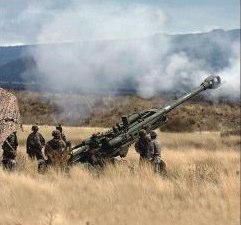
Now that the U.S. Army has admitted to the presence of depleted uranium at its Hawaiʻi live fire training ares, the Army has applied to the NRC for a permit to possess DU at Pohakuloa Training Area. If granted, the permit would allow remains of depleted uranium spotter rounds from the Army’s cold-war-era Davy Crockett nuclear howitzer on site at the training area. The army had denied the presence of depleted uranium in Hawaiʻi until a citizen’s group unearthed an e-mail about their discovery in 2006.
Last week, the Big Island Weekly reported on the NRC’s findings on the U.S. Army’s monitoring plan–a plan intended to detect potential impacts from so-called “fugitive dust”:
The U.S. Army’s plan to monitor the air over Pohakuloa Training Area for depleted uranium has drawn sharp criticism from some Native Hawaiians, environmentalists, activists and independent experts. Now the Army has gotten an admonishment from the Nuclear Regulatory Commission.
“We have concluded that the Plan will provide inconclusive results for the U.S. Army as to the potential impact of the dispersal of depleted uranium (DU) while the Pohakuloa Training Area is being utilized for aerial bombardment or other training exercises,” wrote Rebecca Tadesse, Chief of the NRC’s Materials Decommissioning Branch, in a recent letter to Lt. General Rick Lynch, who heads the Army’s Installation Management Command.
See full Article: “NRC to Army: DU monitoring plan won’t work“
Reading: Edible Hawaiian Islands
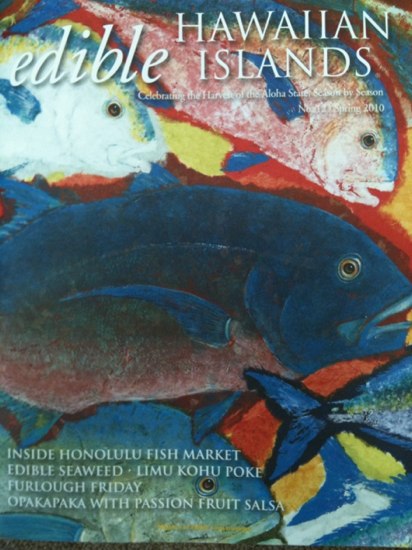
This issue of Edible Hawaiian Islands is devoted to fish, fishing, and fisheries. How fish gets from the sea to your plate, and everything in between.
Some interesting ideas on the future for “sustainable” fisheries by Jon Letman, and on raising fish “Loko” style by Rob Parsons.
We’re liking: Rob’s interview with Michael Kumuhauoha Lee, of the ‘Ewa Beach Limu Restoration Project–
Lee believes that modern Western aquaculture systems run into difficulties by trying to maximize dollar output, and by not looking at how true natural resource systems of abundance are created. “It is the Hawaiian belief,” says Lee, “that everything is a living being. The outer fishpond rock walls are like the skin–they are porous and allow zoo-plankton to pass through. Plankton and algae are among the most basic life forms.
“The fresh-water springs are like a circulatory system,” says Lee. “It is essential to set up a diverse biosphere, and to plant and seed the limu to attract the fish into the pond. Don’t disregard the vitality of the elemental systems, the safeguards and the knowledge that is already here.”
Conservation Fund Raid?
Great piece of investigative reporting by local journalist Ian Lind yesterday, on push by Mayor and gubernatorial candidate Mufi Hanneman to raid a public fund dedicated to conservation lands for rail development projects. That means diverting approximately $3 million+ dollars intended for important agricultural lands, conservation lands, and sacred cultural sites.
The Mufi administration is painting this issue as parks/sustainable development along rail vs. conservation lands. We believe it’s an artificial divide. What this is really about is the integrity of a fund created by voters–by the people–in defense of ag lands, important habitat, open space, and cultural sites. Too big to hassle with process? Mufi believes he can simply sign these funds away for rail development.
From Marj, at Conservation Council Hawai’i:
Please keep an eye on the City and County of Honolulu’s Clean Water and Natural Lands Fund. Let’s make sure it’s not taken over by the politicians. This Special Fund was set up by the people for the people to protect important land on O’ahu for future generations. Resistance by some to the Fund, the Commission that make recommendations on expenditure of the Fund, and the fair and transparent process of applying for the Fund (which was set up by the CWNL Commission 2 years ago) is disappointing.
This is such a wonderful program. I’d hate to lose it. E maka’ala kakou. Defend the Fund. Thank you. Mahalo nui loa also to Ian Lind for his diligent investigative reporting and bringing this to the public’s attention. See Ian’s report at http://ilind.net
Unveiling PA'A Pono Aquaculture Alliance
From Shelley:
Aloha mai kakou,
Pa’a in Hawaiian means many things, such as to be firm or fastened–like an ‘opihi to a rock, to be vigorous, steadfast, engaged. Last week we held a press conference unveiling the Pono Aquaculture Alliance (PAA) which is made up of groups and individuals who are calling for a critical look at open ocean factory fish farms in Hawaii–a business that is slated to expand more than 900% in the next 5 years.
Why are we concerned? Ocean aquaculture comes in many types, from traditional loko i’a (fishponds) to industrial-scale factory fish feed lots. In Hawai’i, we need to make some important choices today about the kind of future we want for aquaculture in these islands. We at KAHEA believe that aquaculture must be pursued in a way that does not harm our oceans and lands, does not allow genetically modified fish or feed, does not dump pharmaceuticals in our waters, does not block public access, and does not privitize public trust submerged lands. If cannot? Well, pohō.
There was good press coverage, check out the story that ran in the Honolulu Advertiser. http://www.honoluluadvertiser.com/apps/pbcs.dll/article?AID=20104090332 We want to thank Uncle Kale Gumapac of Kanaka Council, Rob and Christina from FWW, Aunty Kat from Ka Lei Maile Alii Civic Club, Henry Curtis of Life of the Land and Dr. Neil Frazer from the School of Ocean and Earth Science and Technology at UH Manoa who all contributed to this event. And a special mahalo to Uncle Isaac Harp for his work on this event, his manaʻo, and his solidarity. ![]()
What I believe: Today, Hawaiʻi is being used as a test lab that proponents call “pioneering” but I would call “reckless”. Supporters of industrial fish farms are selling their industrial model as “modern day Hawaiian fishponds”–a claim that is not only misleading, but demonstrates a lack of understanding of traditional resource management. One of the benefits that proponents cite is that their model will help lessen over-fishing. This isn’t true if you’re raising carnivorous fish (like the kahala–”kona kampachi”–grown at Kona Blue, or like the ‘ahi operation venture capitalists at Hawaii Ocean Technologies–HOTI–are trying to start up) that require wild fish being caught elsewhere and imported–creating a hole in the wild food chain.
Later in the evening, after the press conference, we held a community meeting at UH Manoa Hawaiian Studies building. We want to thank all the concerned citizens who showed up to learn and contribute their mana’o on this topic. You guys can check out PAA’s unity statement and get more information about OOA at ponoaqua.org.
We must remember that the stakes are different, dare I say higher, for community members. Worst case scenario for big business is they lose money, and have to pack up and go home. Worst case scenario for the community is the end of free access to our oceans, which means losing the ability to feed ourselves and our children and their children.

